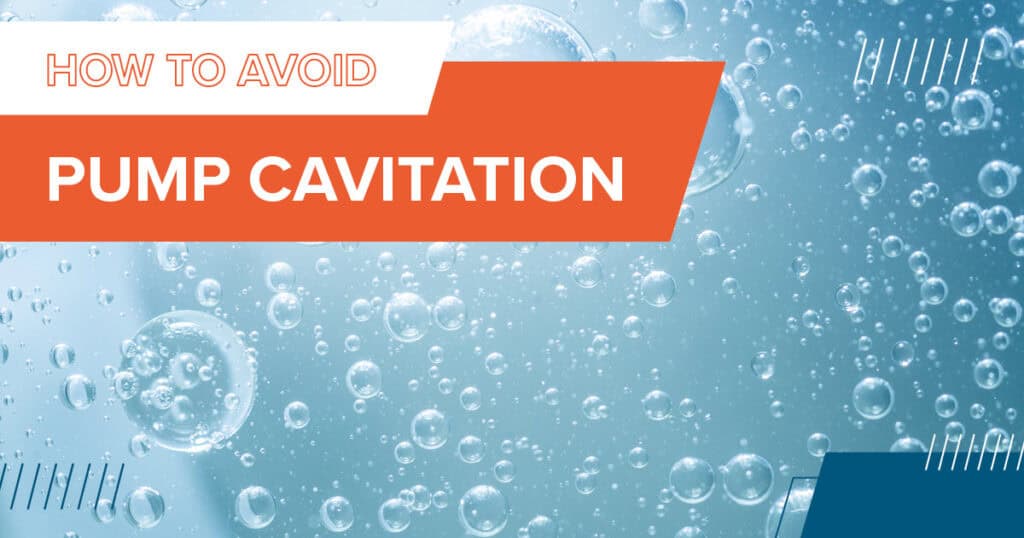Cavitation is one of the biggest concerns for centrifugal pump operators. It is a serious problem that can cause significant damage to the impeller and other critical components throughout the pump system. Cavitation is an issue to avoid at all costs. Preventative measures can be taken to minimize the risk of cavitation. Then careful monitoring and proper maintenance should enable you to recognize the early signs of cavitation before it causes pump failure.
What Is Cavitation?
Cavitation happens when vapor bubbles form inside the process fluid. Ultimately they implode, which sends shock waves throughout the fluid. A collapsing vapor bubble can release a significant amount of energy. In most cases, many bubbles form and implode. The impeller blade typically takes the brunt of this force, thus causing damage. The pump housing, piping, and other equipment parts can also fail as a result of cavitation.
Proper Pump System Configuration
The first step to avoid pump cavitation is to ensure you use the correct pump for the application. Centrifugal pumps are popular because they are extremely versatile. However, they are not apt for every fluid processing application. Even if a centrifugal pump is the best option, the system should still be configured to meet your specific production needs. It should handle the required pressures, temperatures, and flow rates. Pump construction materials, mechanical seals, and other customizations may also reduce cavitation concerns.
Recognizing the Early Signs of Cavitation
During pump operation, it’s important to have an effective monitoring system. Whether you are watching over the pump equipment manually, using sensor-based monitors, or have fully predictive maintenance AI technology, you can keep an eye out for early signs of cavitation:
• Low liquid levels in the supply tank
• Fluid line obstructions creating a localized low-pressure zone
• Going below the desired net positive suction head (NPSH)
• Flow rate inconsistencies
• Excessive noises and vibrations
Pump Cavitation Maintenance and Repair
At the first sign of cavitation, take steps to address it before it worsens. Cavitation can cause damage or at least hinder the overall performance of your pump equipment. Some vapor bubble formation may be unavoidable depending on your application. It’s when, where, and how violently those bubbles implode that determines how much damage cavitation might cause.
A proper preventative maintenance plan will help you avoid pump cavitation. Routine equipment inspections, replacing worn seals and bearings, and regular system tests can enable you to catch cavitation issues as early as possible. If cavitation is already happening, then take action. Make repairs and system adjustments to resolve the issue as soon as possible. Cavitation is generally related to the inlet pressure of the pump. Keep a close eye on tank levels, or install monitoring sensors to provide immediate and accurate inlet pressure measurements. Otherwise you can also monitor flow rates and NPSH to recognize those early signs of pump cavitation.
For all your pump selection and system optimization needs—including custom configuration, training, monitoring, and maintenance strategies—count on the team at DXP Pacific. Call us today to make cavitation concerns a thing of the past!

